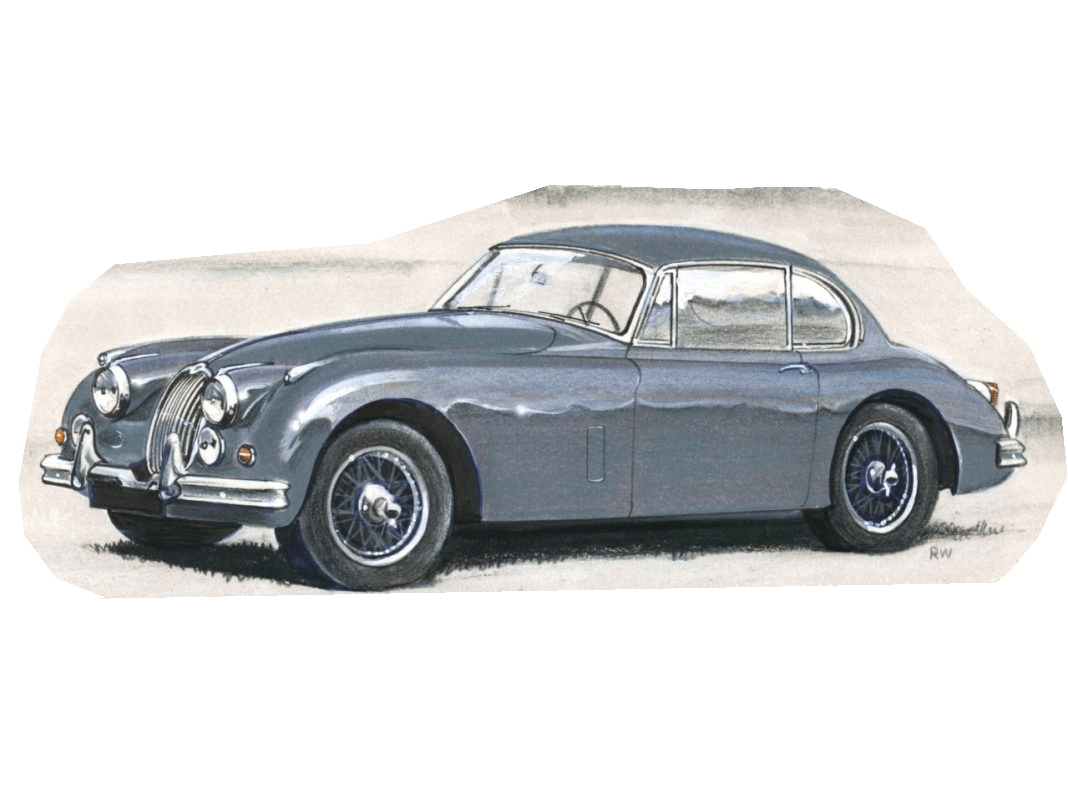
The Jaguar XK150, since its inception in 1957, has been the embodiment of futuristic auto-making technology combined with intricate British craftsmanship. But when cast under the critical lens, how does its performance measure up against its contemporaries? When put alongside other classic sports cars, the XK150 shows a performance that remains surprisingly competent.
The XK150 was successor to the much-celebrated XK140, and it indeed had the challenging task of living up to the reputation of its predecessor. Aesthetically, the XK150 was an evolution from the XK140, sporting a one-piece windscreen and a wider grille. But it was under the hood where the main differences lied. The XK150 came loaded with a potent 3.4L six-cylinder engine that was rated at 190hp, an impressive output at the time. Later models even offered an optional 3.8L engine with 220hp.
However, the real competition for the XK150 lies in the realm of other classic sports cars. When compared to cars like the Chevrolet Corvette C1, which was also produced in the same era, the Jaguar holds up impressively well. For instance, the Corvette C1 came equipped with a 283 cubic inches V8 engine that produced 230hp. This gave the Corvette a slight edge in terms of power, but the Jaguar had an advantage in terms of handling with its independent rear suspension.
Moreover, both vehicles were neck-and-neck when it came to acceleration, with the XK150 reaching 0-60mph in just above 7 seconds in standard form and the Corvette in around 6 seconds with the fuel-injected version. However, it is worth noting that the XK150 provided a smoother, more refined drive with its characteristic British sophistication, unlike the raw and hard-hitting performance of the Corvette.
In contrast with Italians who produced such stylish legends as the Alfa Romeo Giulietta Sprint Veloce, XK150 holds up admirably. The Sprint Veloce prided itself on a 1.3L engine that expelled about 90hp, clearly falling behind the Jaguar in pure power output. However, the cars are difficult to compare directly due to the Jaguar’s larger and weighty design in contrast to the nimble and lightweight Italian.
Ferrari, another Italian rival, released the 250 GT in the same era. At full gallop, the 250 GT’s 3.0L V12 produced around 240hp. It was faster, boasting a 0-60mph of around 6 seconds. Where the XK150 shone, though was in its comfortable ride and sophistication, something not often found in sports cars of the era.
When put against the more domestic Aston Martin DB Mark III, which came with a standard 2.9L producing around 162hp, the Jaguar definitely boasted higher power output. The Aston Martin, however, offered a more luxurious feel, with extensive personalization options attracting the high-end market.
To conclude, the Jaguar XK150, with its powerful engine, elegant design and robust build, held its own amongst its contemporaries. It wasn’t the fastest, nor the most luxurious, but it combined elements of both to be unique. The sports car market of the late ’50s was characterized by varying philosophies, and the Jaguar embodied a balanced approach, offering a blend of swift performance, practicality, comfort, and style. And while certain competitors may have bettered the XK150 in one dimension or another, few could match its all-rounder competence. Thus, the XK150 remains a stalwart representative of Jaguar’s quintessential British resilience in the classic sports car market.